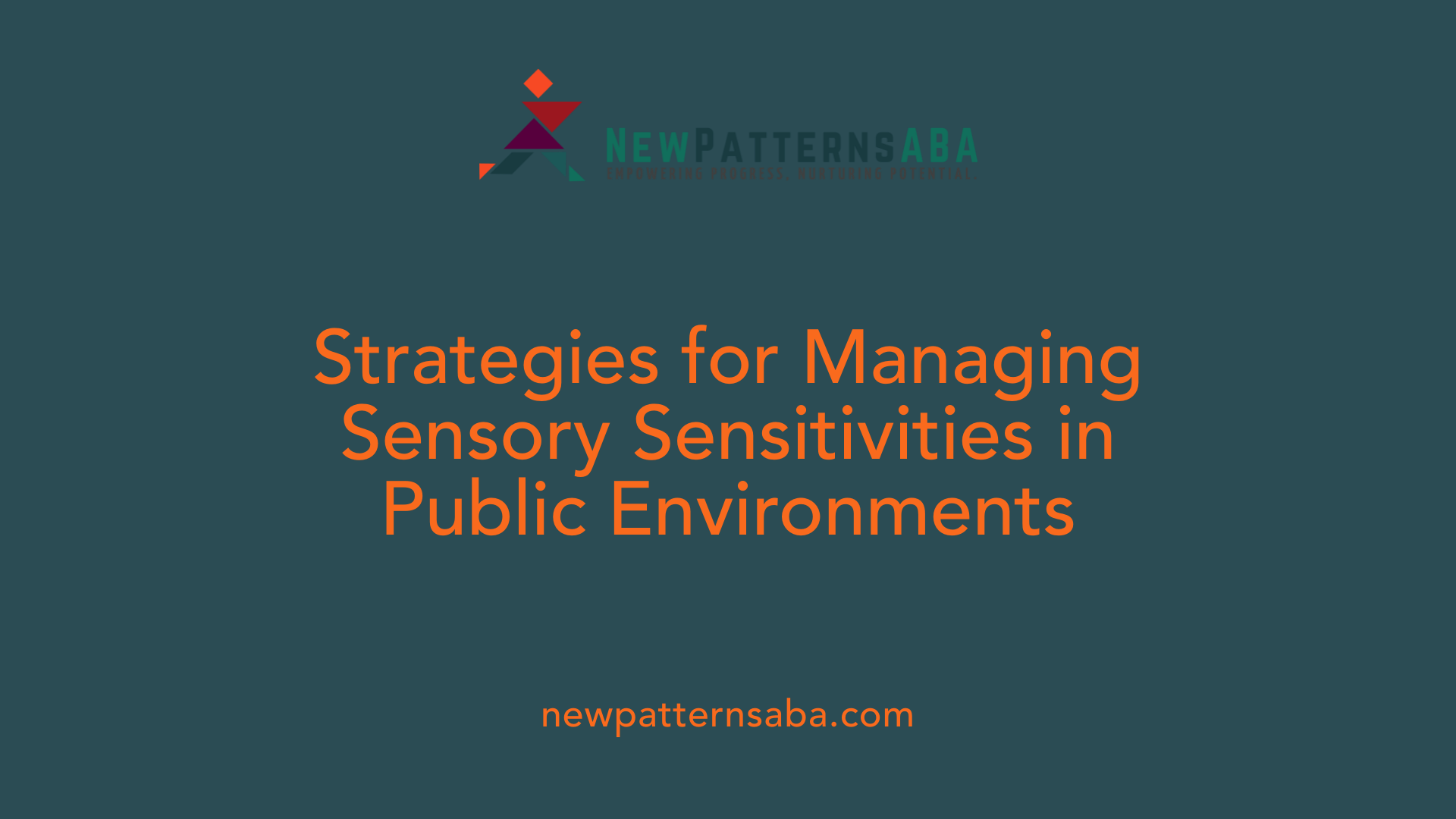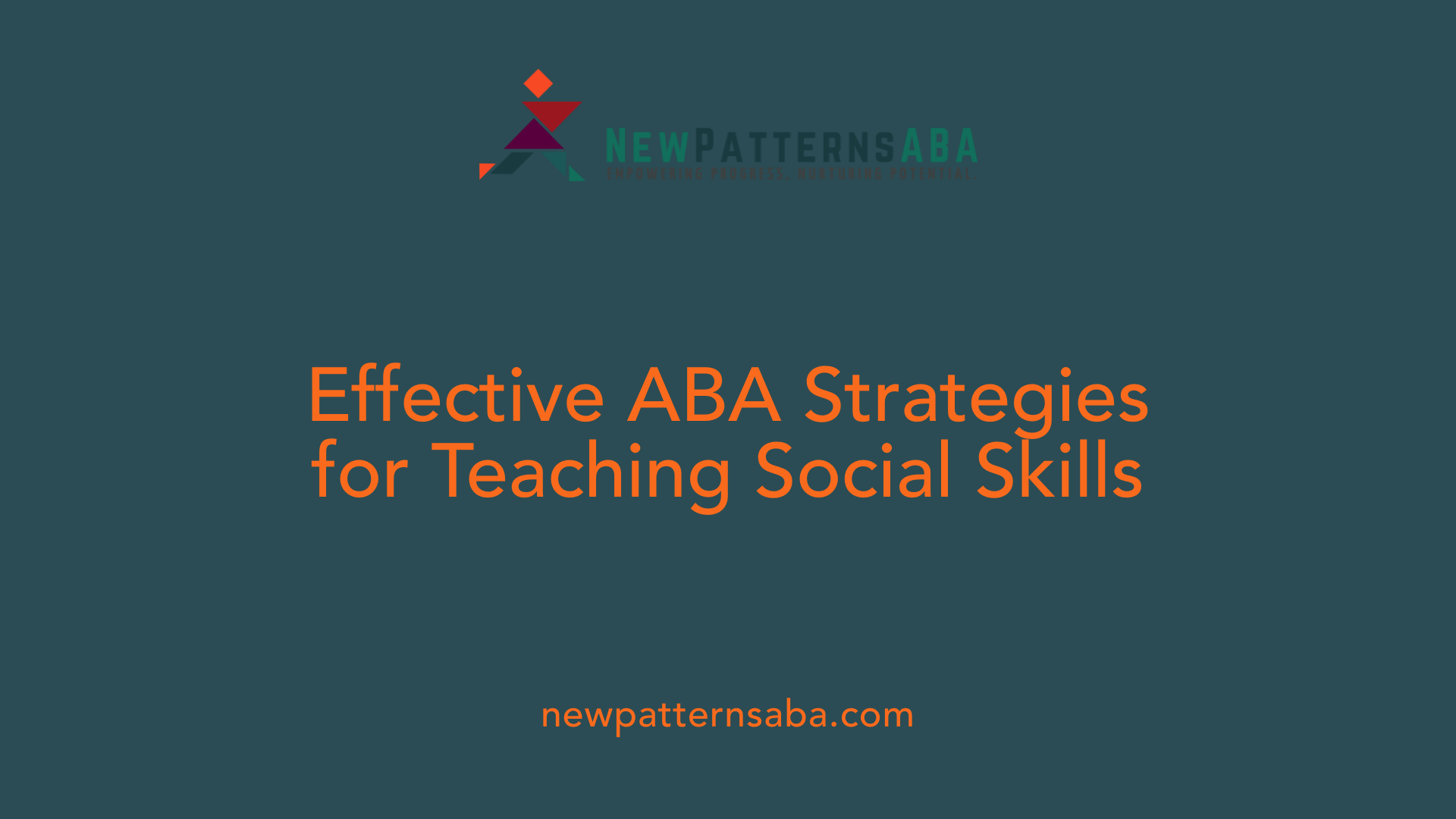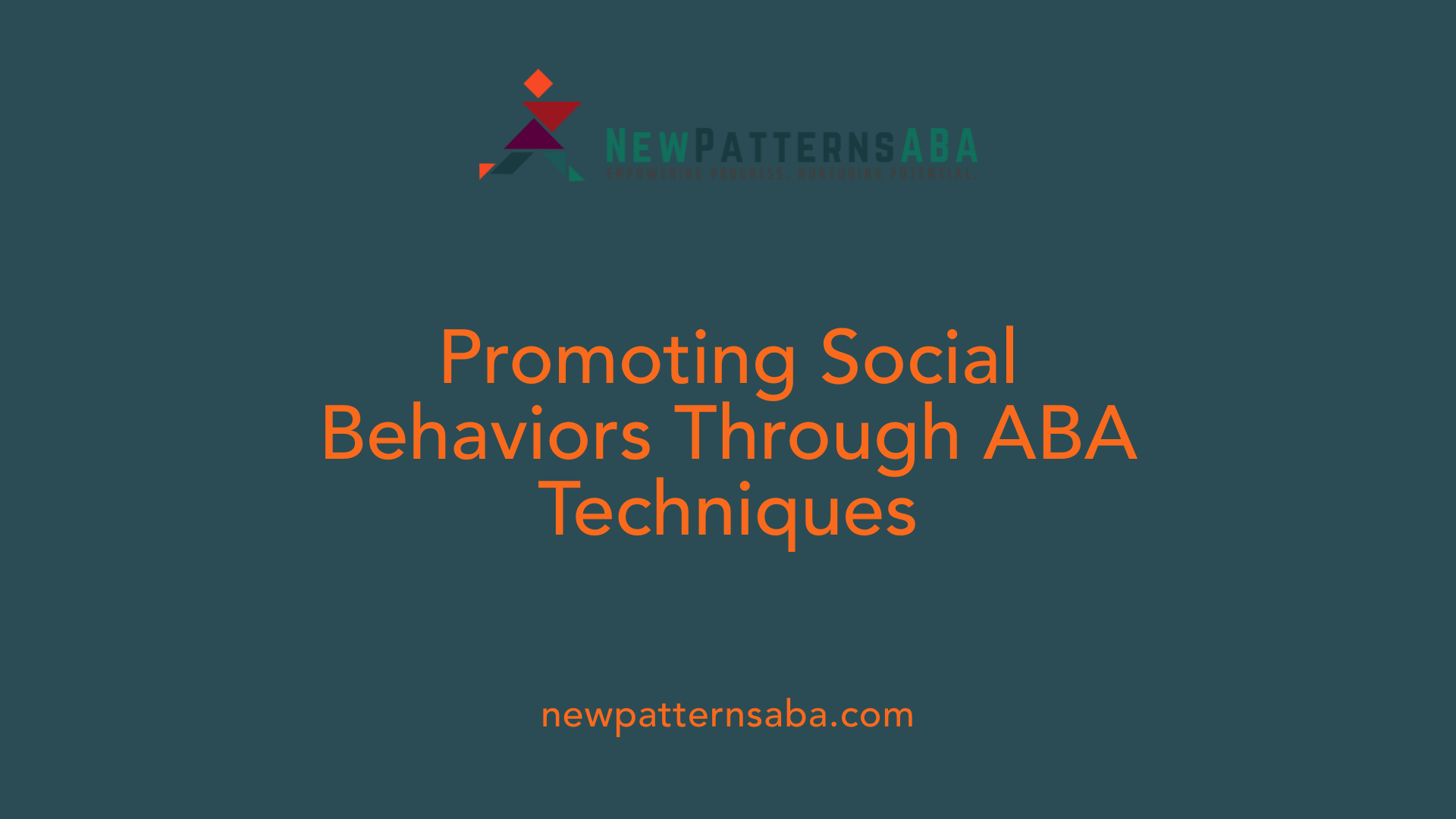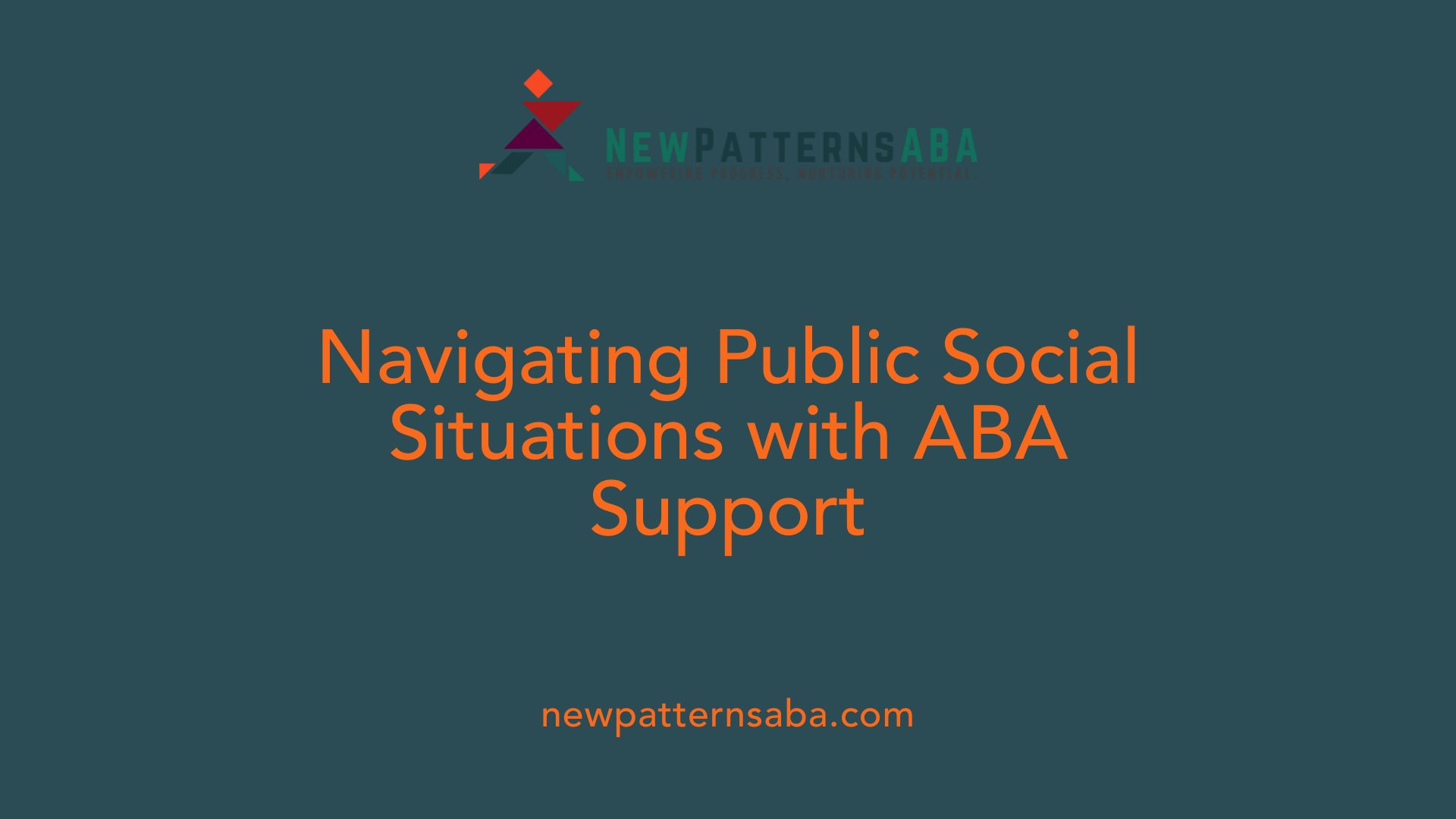Maximizing ABA Techniques in Real-World Environments
Introducing ABA in Public Spaces
Applied Behavior Analysis (ABA) offers a robust framework in addressing the diverse needs of individuals with developmental challenges, particularly when navigating public spaces. This article explores practical ways to implement ABA strategies, enhancing focus, managing sensory sensitivities, and improving social interaction skills in real-world settings.
Managing Sensory Sensitivities in Public Settings

How can Applied Behavior Analysis (ABA) be used to help children with autism manage sensory sensitivities in public settings?
Applied Behavior Analysis (ABA) employs a variety of tailored strategies to assist children with autism in navigating sensory sensitivities within public environments. Central to this approach is positive reinforcement, which helps children learn coping mechanisms for dealing with sensory overload. For instance, rewarding a child for wearing noise-canceling headphones in a busy store encourages them to adopt strategies that mitigate distress during sensory-heavy experiences.
Another valuable technique is incremental exposure. By gradually introducing children to public settings with controlled sensory inputs, they become desensitized to potential triggers. For example, starting with visits to quieter areas before progressing to busier ones can ease anxiety over time.
Collaboration with specialists, such as occupational therapists and speech therapists, further enriches ABA's effectiveness. These professionals contribute insights on sensory diets, which involve integrated activities that provide necessary sensory input to help regulate a child's response to sensory overload.
Additionally, implementing sensory breaks during outings offers children necessary moments to regroup, reducing overwhelming feelings. Creating sensory-friendly environments in public spaces can involve arranging quieter areas for children to retreat when needed.
In summary, a combination of these strategies allows ABA to enhance a child’s ability to cope with sensory challenges in public settings significantly.
Enhancing Focus and Reducing Distractions

What practical techniques can be used to enhance focus and reduce distractions for individuals with developmental disorders in public places?
Practical techniques to enhance focus and reduce distractions for individuals with developmental disorders in public places involve several Applied Behavior Analysis (ABA) strategies. Positive Reinforcement is one of the most effective methods, where individuals are rewarded for engaging in desired behaviors. For example, a child might earn a token for staying close to a caregiver in busy environments.
Prompting and Modeling are also essential techniques. Visual cues, such as signs indicating expected behavior, can act as reminders. Modeling by adults—especially respected figures—can guide children in understanding how to navigate social interactions and maintain focus in public settings.
Environmental Modifications play a critical role too. Reducing noise, minimizing visual clutter, and arranging spaces to promote calm can significantly decrease distractions. Additionally, incorporating sensory toys or fidget tools can help engage children’s attention and manage their energy levels effectively.
By blending these ABA strategies, we can create a supportive framework that significantly enhances focus and social skills, enabling individuals to thrive in busy environments.
Teaching and Assessing Social Skills in Public Contexts

How can ABA strategies help in teaching and assessing social skills in public contexts?
ABA strategies can significantly enhance the teaching and assessment of social skills in various public settings. By utilizing structured, evidence-based approaches tailored to individual needs, these strategies effectively guide learners in practicing and mastering essential social interactions.
Behavioral Skills Training (BST)
BST is a core component of ABA that involves a systematic method to teach social skills. It encompasses:
- Explanation: Educators explain the importance of social skills and how they apply in real-world scenarios.
- Modeling: Demonstrating the desired behaviors allows learners to visualize and understand the expected actions.
- Feedback: Offering constructive feedback helps learners adjust their responses and improve skills.
Role-playing and Video Modeling
Both role-playing and video modeling are interactive methods to practice social situations:
- Role-playing allows individuals to engage in simulated interactions, building confidence and comfort in a supportive environment.
- Video modeling provides visual demonstrations of proper social behaviors, reinforcing learning through observation.
Setting Specific Goals
Establishing precise, measurable goals is vital for effective skill development:
- Goals must be individualized, ensuring they align with each learner's needs.
- Regular assessments of progress can help track improvements and adapt strategies as necessary.
- This structured approach enables educators to address specific deficits in social skills, ultimately leading to better outcomes in real-world contexts.
In summary, these ABA strategies not only improve social competencies but also facilitate meaningful interactions and enhance the overall social experiences of learners in diverse settings.
Promoting Appropriate Social Behaviors with ABA

What are some ways to promote appropriate social behaviors, like social distancing, using ABA in public settings?
To effectively promote appropriate social behaviors, such as social distancing, in public settings through Applied Behavior Analysis (ABA), several strategies can be implemented. These methods focus on reinforcing desired behaviors while providing the necessary support for individuals who may find such environments challenging.
Modeling and Social Narratives
Modeling plays a crucial role in shaping behaviors. Using visible cues, such as signs or social narratives, individuals can better understand expected behaviors. For instance, demonstrating social distancing through video modeling can help individuals visualize and replicate these actions in real-life scenarios.
Behavioral Skills Training (BST)
Another fundamental approach is Behavioral Skills Training (BST). This method involves several components:
- Explaining the importance of social distancing.
- Modeling the behavior by showing how to maintain appropriate distance.
- Practicing the behavior in real-world situations.
- Providing feedback to reinforce successful attempts.
Consistent Reinforcement
Consistency is vital for effective learning. Positive reinforcement techniques, such as giving praise or tokens for maintaining social distance, can enhance compliance. Caregivers should also personalize prompts and reminders based on the individual’s age and understanding, ensuring they feel supported and encouraged in their efforts to adhere to social distancing norms.
By implementing these ABA strategies, we can create an environment where individuals not only understand but actively engage in appropriate social behaviors in public settings.
Navigating Social Situations with ABA Support

How can ABA facilitate better navigation of social situations for children facing challenges in public areas?
ABA therapy is instrumental in helping children overcome obstacles in public settings. By implementing structured, evidence-based techniques, clinicians create individualized programs that target skill development according to each child's unique needs. This tailored approach ensures that children learn essential social skills that are applicable in real-world contexts.
Modeling and Role-Playing
Therapists utilize modeling to demonstrate appropriate behaviors in social situations. Children observe their therapists and are guided on how to engage with peers. Role-playing further reinforces these skills in a safe environment, allowing children to practice and receive feedback. This hands-on experience significantly enhances their understanding of social cues.
Social Stories
Social stories serve as a practical tool to prepare children for different social interactions. By using relatable narratives that outline expected behaviors in various situations, children can familiarize themselves with what to expect. This method reduces anxiety and sets clear expectations for their actions in public spaces.
Community Outings
Integrating community outings into ABA practices is a powerful way to apply learned skills in real-life settings. These outings provide children with opportunities to experiment socially, helping to generalize their skills beyond therapy. As they navigate these environments, children build confidence and independence, crucial for successful interactions.
By focusing on specific social skills and utilizing techniques like modeling, role-playing, and community engagements, ABA therapy equips children with the tools to navigate public spaces more effectively.
Integrating ABA in Community Environments
Practicing skills in real-world scenarios
ABA therapy excels at applying behavioral principles in everyday settings. Therapists work closely with individuals to practice essential skills in real-world scenarios, particularly emphasizing social interactions in community environments. This hands-on approach ensures that learners gain confidence and competence when navigating various public spaces, whether at school, at home, or in their communities.
Engagement with diverse settings
Incorporating ABA strategies across different venues helps in generalizing skills learned in therapy to real-life situations. Programs are tailored to fit individual needs, focusing on specific goals like conversation skills and personal boundaries. By utilizing techniques such as positive reinforcement, prompts, and modeling, ABA enhances the ability of individuals to engage successfully with their surroundings. This customization helps them adapt and thrive, turning overwhelming experiences into practical learning opportunities.
Customizing ABA Programs for Public Interactions
Individualized Goals in ABA Therapy
When implementing ABA therapy in public settings, the significance of customized goals cannot be overstated. Each learner has unique needs, and their social skills goals should be specific, observable, and measurable. This tailored approach allows for effective tracking of progress and adaptation of teaching methods, ensuring that each individual receives appropriate support.
Tailoring Interventions to Public Settings
ABA interventions must also be suited for public interactions. Therapists work to develop strategies that help learners navigate various social situations they may encounter outside of their home or classroom. For example, techniques like Behavioral Skills Training (BST) can be applied to model appropriate behaviors in real-world scenarios, such as waiting in line or interacting with peers at a park.
Incorporating routines of reinforcement, such as positive reinforcement, can further boost the success of these interventions, encouraging learners to engage more confidently in public spaces.
| Goal Type | Example | Public Setting Application |
|---|---|---|
| Social Skills | Conversation skills | Practicing greetings in a school setting |
| Personal Space | Maintaining distance | Learning to stay in line during community events |
| Hygiene | Hand washing routines | Applying hygiene practices before eating in restaurants |
Structured Progression in ABA: From Beginner to Advanced
Categorizing Skill Levels
In Applied Behavior Analysis (ABA) therapy, social skills are typically organized into three levels: beginner, intermediate, and advanced. This classification helps educators and therapists identify the most appropriate intervention strategies for each learner. By focusing on the right skill level, practitioners can tailor their approaches to meet the specific needs of individuals, ensuring effective learning outcomes.
Addressing Prerequisite Skills
Before complex social skills can be taught, it is crucial to establish a strong foundation through prerequisite skills. ABA emphasizes a structured progression, where learners first master basic behaviors that facilitate more intricate social interactions. For example, foundational skills like proper greetings and following directions must be addressed before embarking on advanced conversation techniques or group participation.
By building these layers of skills, ABA fosters a comprehensive understanding that ultimately enhances social competence in various settings.
Conclusion: Embracing ABA for Public Success
Implementing Applied Behavior Analysis strategies in public spaces can substantially improve the lives of individuals with developmental disorders. By addressing sensory sensitivities, enhancing focus, and strengthening social skills, ABA equips children with tools to navigate complex social environments. This comprehensive, individualized approach is not merely about conforming to societal norms but about empowering individuals to thrive in community settings. As educators, caregivers, and professionals incorporate these techniques, they create inclusive spaces where every individual has the opportunity to succeed.
References
- Applied Behavior Analysis (ABA) | Autism Speaks
- Effectively Teaching Social Skills in ABA
- Blog - Step It Up ABA
- 7 ABA Techniques That Could Save The World By Encouraging ...
- How to Use ABA in the Classroom
- All You Need to Know About ABA and Sensory Integration Therapy
- Can ABA be used for SPD? - Special Learning
- Managing Sensory Sensitivities in Autism | AutismCOE
- Interventions Targeting Sensory Challenges in Children With Autism ...






